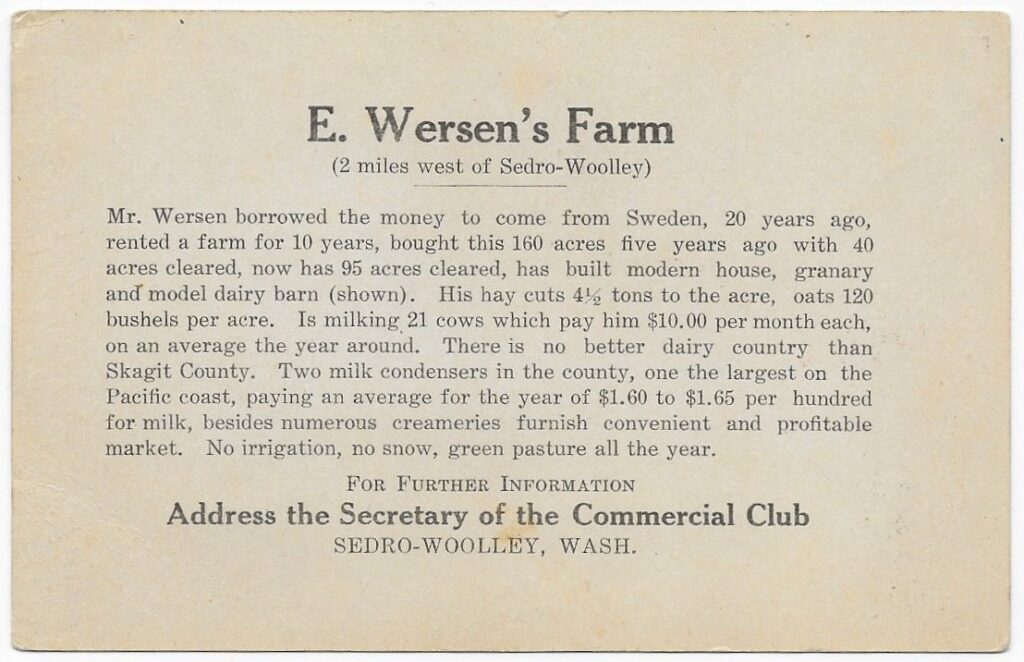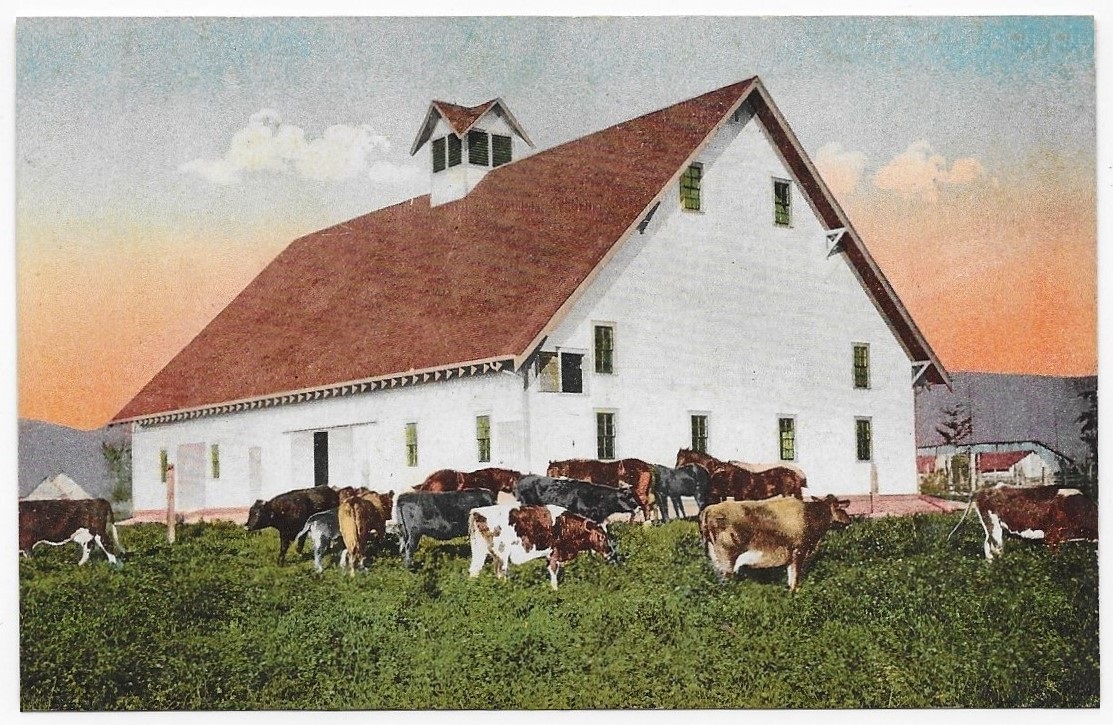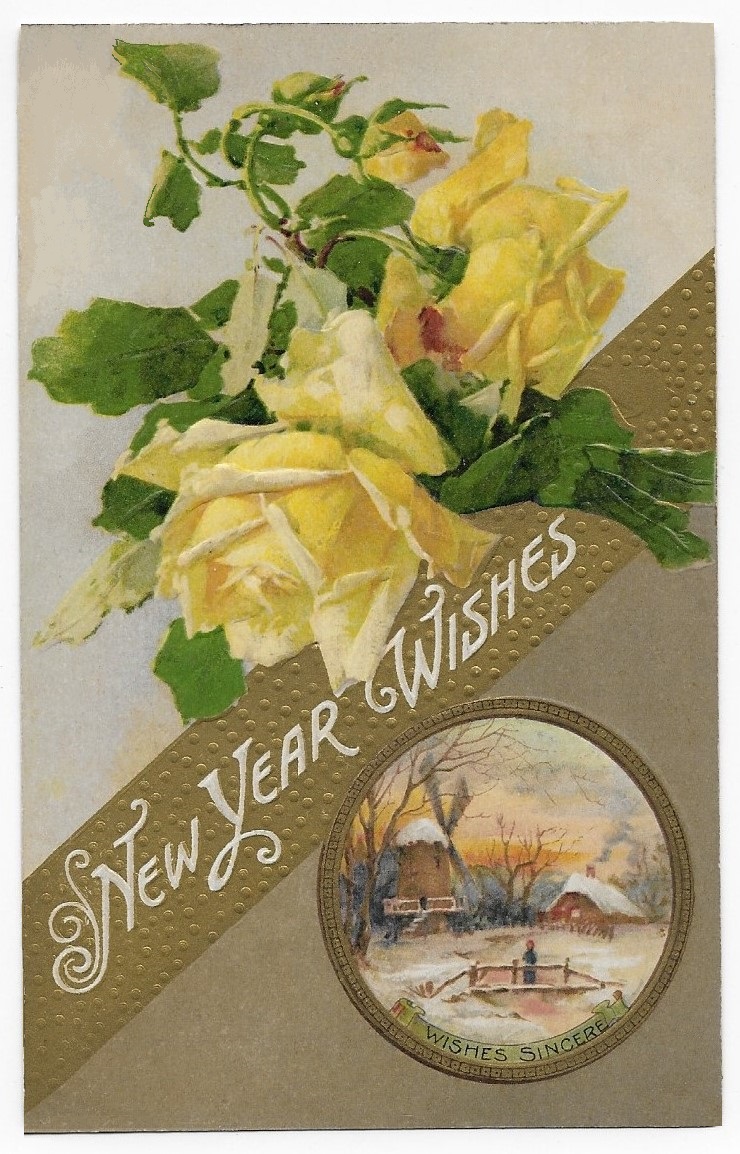In the last decade of the 19th century and the first decade of the 20th, more than 150 thousand immigrants from Scandinavia settled in the Pacific Northwest.
A large number of immigrants from Sweden settled in the State of Washington.
https://www.mnhs.org/newspapers/swedishamerican-migration
Most were looking for land and economic opportunity, and many found the climate and landscape of Washington reminiscent of their homeland.
The most detailed records of the Swedish community relate to the area around Seattle, where Swedish laborers worked as lumberman, railroad men, dock workers, and mill workers.
But a number of towns and rural counties attracted Swedish farmers and dairyman.
https://archiveswest.orbiscascade.org/ark:/80444/xv63388
This postcard advertisement targeted Swedish dairy farmers by touting the experience of one very successful Swedish immigrant In the town of Sedro-Woolley in Skagit County.
Sedro -Wooley was the juncture of several rail lines in this temperate corner of northwest Washington – about 25 miles east of Puget Sound.
The town initially prospered due to logging and coal-mining, but local industry declined after World War II.
The area still has a number of dairy farms.
https://en.wikipedia.org/wiki/Sedro-Woolley,_Washington
The reverse of the postcard shares the remarkable success of E. Wersen, a farmer and dairyman of Sedro-Wooley:
“Mr. Wersen borrowed the money to come from Sweden, 20 years ago, rented a farm for 10 years, bought this 160 acres five years ago with 40 acres cleared, now has 95 acres cleared, has built modern house, granary, and model dairy barn (shown).
His hay cuts 4 ½ tons to the acre, oats 120 bushels per acre. Is milking 21 cows which pay him $10.00 per month each, on an average the year round.
There is no better dairy country than Skagit County.
Two milk condensers in the county, one the largest on the Pacific coast, paying an average for the year of $1.60 to $1.65 per hundred for milk.
No irrigation, no snow, green pastures all the year.“
The face of the postcard shows the bright and commodious barn of Mr. Wersen – around which some of his dairy herd is clustered.
But the appeal to Swedish countrymen, one imagines, lies more strongly in the figures and calculations that show the prosperity of the farmer.





